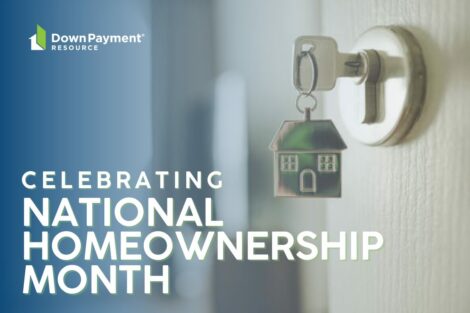Owning a home is a dream for many, but the financial hurdles of buying a house can often feel insurmountable. One major obstacle is the down payment, typically a significant upfront cost that can deter prospective buyers. However, there’s good news: over 2,300 down payment assistance programs exist across the U.S. to help make homeownership more accessible. In this guide, we’ll explore how these programs work and how you can apply for them.
Understanding Down Payment Assistance Programs
Down payment assistance programs are initiatives offered by various entities, including government agencies, non-profit organizations, and even employers. Their primary goal is to provide financial support to qualified homebuyers, typically in the form of grants, loans or tax credits, to help cover a portion or all of the down payment and sometimes closing costs.
These programs vary widely in terms of eligibility criteria, funding availability, and the amount of assistance offered. Some programs are specifically tailored to first-time homebuyers (40% of programs do not have a first-time homebuyer requirement), while others may target certain demographics or geographical areas. It’s essential to research the specific programs available in your area to determine which ones you may qualify for.
How Do Down Payment Assistance Programs Work?
While the specifics can vary, the general process of accessing down payment assistance typically involves the following steps:
- Research and Determine Eligibility: You can use the free Down Payment Resource search tool to find available programs and determine your eligibility based on factors such as income, credit score, and home purchase price.
- Apply for Assistance: Once you’ve completed your search, you can connect with a mortgage lender and get pre-approved. Or, if you already have a lender in mind, you share your results with your loan officer and complete an application. The application process may involve providing documentation such as pay stubs, tax returns, and bank statements to verify your financial situation. We’ve outlined a few important questions to ask your mortgage lender that can help you get started.
- Attend a Homebuyer Education Course: Most down payment assistance programs require applicants to complete homebuyer education courses, especially first-time buyers. These courses can be done in-person or virtually and provide valuable information about the homebuying process, financial management, and homeownership responsibilities.
- Receive Approval and Assistance: If your application is approved, you’ll receive confirmation of your eligibility and details about the assistance you qualify for. This assistance may come in the form of a grant, forgivable loan, low-interest loan or tax credit, depending on the program.
- Purchase Your Home: Keep in mind that some assistance programs may require you have a home in mind before applying. That’s why it’s essential to work closely with your lender and real estate agent to ensure a smooth transaction.
- Comply with Program Requirements: Most down payment assistance programs have specific requirements that you must meet to maintain eligibility. For example, you will need to occupy the home as your primary residence for a certain period or fulfill certain homeownership responsibilities.
Tips for Applying for Down Payment Assistance Programs
Navigating the world of down payment assistance programs can seem daunting, but with careful planning and research, you can increase your chances of success. Here are some tips to help you along the way:
- Start Early: Begin researching down payment assistance programs well in advance of your planned home purchase. Some programs have limited funding and may have waiting lists or application deadlines.
- Improve Your Credit Score: A higher credit score can increase your chances of qualifying for assistance and securing favorable terms. Take steps to improve your credit by paying bills on time, reducing debt, and correcting any errors on your credit report.
- Gather Documentation: Be prepared to provide documentation of your income, assets, and financial history when applying for assistance. Having this information readily available can streamline the application process.
- Seek Professional Guidance: Consider working with a HUD-approved housing counselor, mortgage lender or real estate professional who has experience with down payment assistance programs. They can help you navigate the process and identify the programs that best suit your needs.
- Stay Informed: Keep abreast of changes to down payment assistance programs and eligibility requirements in your area. Subscribe to newsletters, attend workshops, and regularly check program websites for updates.
What Are You Waiting For?
Down payment assistance programs can be a valuable resource for prospective homebuyers, helping to make homeownership more attainable. By understanding how these programs work, you can increase your chances of successfully accessing assistance and achieving your goal of owning a home. With careful planning and diligence, the path to homeownership can become a reality.
Find down payment programs in your area today and see if you’re eligible!


